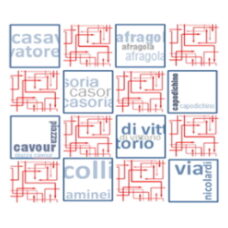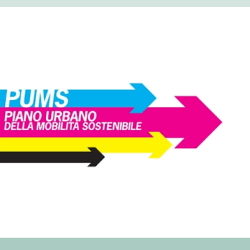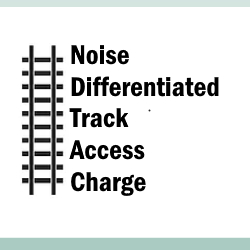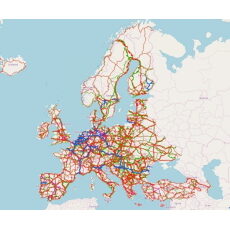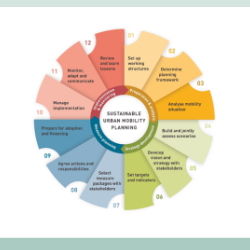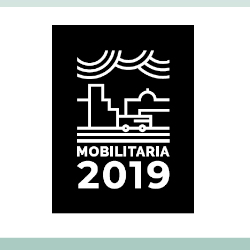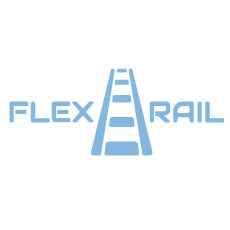- All
- African projects
- assessment
- assessment selected projects
- Assessment selected projects 2
- Assessment selected projects 3
- Assessment selected projects 4
- ASTRA
- Cost Benefit Analysis
- Electric mobility and ITS
- MOMOS
- planning
- planning selected projects
- planning selected projects 2
- planning selected projects 3
- planning selected projects 4
- planning selected projects 5
- projects
- Railways projects
- research
- research selected projects
- research selected projects 2
- research selected projects 3
- studies
- studies selected projects 1
- studies selected projects 2
- studies selected projects 3
- studies selected projects 4
- studies selected projects 5
- TRTingegneria
- TRUST
- urban mobility
- Financial and economic analysis of the new metro line Afragola AV-Napoli and of a moving walkways at Colli Aminei station The project consists of an evaluation of two transport infrastructure projects: the new metro line Afragola-Napoli (LAN) and of a moving walkways at the Colli Aminei metro station (CAM). Respectively, these projects have been planned by the regional administration to connect the Afragola high-speed rail station with Naples inner city, and to improve the accessibility of the (sloping) Colli Aminei metro station. Based on a detailed traffic analysis, TRT carried out a financial and economic evaluation (cost benefit analysis) of the projects, considering on the one hand the project investment and operating costs, and on the other hand the impacts expected from the induced modal shift (lower road traffic levels, travel time savings, reduction of traffic externalities, etc.). The evaluation took into consideration different project layouts of LAN and CAM, contributing to identify the best alternative from a cost-benefit point of view. As provided by the national guidelines on transport project evaluation, a risk analysis was also developed including a qualitative risk analysis, a quantitative risk analysis, a sensitivity analysis.
- Corridor Munich-Verona – Study and analysis of the forecasted passenger traffic flows and the related offers of long-distance trains based on the future infrastructure This study was a modelling application targeted at forecasting future rail passenger demand on the Verona – Munich rail corridor. The opening of the Brenner Basis Tunnel (BBT) is expected by the year 2030. Its effect will be to save more than one hour from rail travel time between Munich and Verona. The full completion of infrastructure should provide additional time savings by the year 2040. This study, using modelling tools, aimed at forecasting the additional rail passenger demand onto the corridor as effect of new rail supply in order to provide inputs for the design of long-distance rail passenger services on the corridor. Four future scenarios were explored. All scenarios shared the same demographic and economic assumptions influencing the modification of the overall transport demand in the area. Then, each scenario considered a specific configuration of passenger rail services on the Corridor, especially in terms of frequencies and stops. The forecasts were based on the results of the two models: the TRUST model used by TRT dealt with long-distance origin-destination pairs at NUTS3 level, while the regional demand was simulated in more spatial detail by means of the VMÖ 2025+ model used by the Austrian company TRAFFIX. The project was managed by EBP Schweiz AG. For more information, please check BBT Brenner Base Tunnel website
- Implementation and monitoring of the Sustainable Urban Mobility Plan of the city of Parma During the year 2019 the Master Mobility Plan coordinated the strategies of the SUMP implementation through the formation of “thematic tables” participated by external experts and by members the Mobility Sector of Parma Municipality. The “thematic tables” included 4 main areas: cycling, urban goods logistics, public transport and ITS. Furthermore the activities of the Master Mobility Plan were oriented towards the development of the first steps for the implementation of the urban area Low Emission Zone (LEZ). The effort was to present the LEZ as a permanent easy to apply and understand measure aimed at overcoming the logic of temporary and emergency initiatives to improve air quality. The assignment also provided for the coordination of the monitoring activities of the SUMP: These activities consisted in the collection and systemization of mobility trends data in Parma over the past 2-3 years and included a field surveys with traffic counts on the urban radials, on the main intersections and on cycling mobility. TRT was also responsible of the drafting of the Sustainable Urban Mobility Plan and the General Urban Traffic Plan of the city of Parma.
- Evaluation of noise differentiated track access charges schemes: Support study to the evaluation of Implementing Regulation 2015/429 The Regulation 2015/429 establishes rules for Noise Differentiated Track Access Charge (NDTAC) schemes. The purpose of the study is to provide insight on the performance of the Regulation and its impacts in the EU. To that end, it answers 19 evaluation questions grouped under the evaluation criteria of effectiveness, efficiency, relevance, sustainability, coherence and EU added value. The primary geographical scope of the evaluation is the three Member States were the Regulation has been applied (AT, DE, NL), along with Switzerland (the first country to create a NDTAC scheme aiming at reducing rail noise by incentivising the retrofitting of noisy wagons with composite brake blocks). The wider EU is also considered, in order to understand the impacts that the NDTAC schemes in these four countries have had in countries that did not implement such schemes. The analysis is based on data collected from a range of primary and secondary sources including data on the freight wagons fleet and direct input from relevant stakeholders collected using interviews and surveys with rail industry, authorities and a public consultation.
- Economic modelling exercise in support of the multi-modal transport market studies for nine core network corridors The objective of the study is to provide transport and economic modelling support to the nine “Studies on the TEN-T Core Network Corridors and support of the European Coordinators”. Such transport and economic modelling support: Is based on the methodology of the “The impact of TEN-T completion of growth, jobs and the environment” study, Makes reference to the Baseline Scenario of the TEN-T Growth Study; Adopts the same approach for each of the nine corridors. The transport and economic modelling results estimate the impact on travel time and modal shift for macro sections of the different TEN-T corridors and on growth, jobs and decarbonisation by country along the corridors and for EU28, EU15, EU13.
- Training course on Sustainable Urban Mobility Plans for five Western Balkan countries TRT was selected by GIZ (the German Cooperation) to design and manage a training course targeted to urban mobility experts, public officials and local practitioners from five different Western Balkan countries (Serbia, Bosnia Herzegovina, North Macedonia, Montenegro, Albania). The training programme was designed as an intense, full-time, one-week long, interactive course (“Boot Camp”). It was held in May 2019 in Podgorica, Montenegro, with the participation of 25 trainees. Participants were experts in the field of traffic, urban or strategic planning, from local self-governances, academia, relevant NGOs or similar. The training course had two main goals: i) to improve the knowledge and to increasing the capacities of the participants, in order to enable them to support a Sustainable Urban Mobility Plans (SUMP) development process in line with the ELTIS European guidelines; ii) to select potential candidates for a “regional expert pool” to be established by GIZ in the Balkan countries. in the Balkan countries. Activities performed by TRT included the development of the programme, the drafting of training materials, the management of the sessions on site with two experienced trainers, and the final evaluation of the proficiency of participants.
- Electric mobility, a simulation in four metropolitan areas On April 2019 the second edition of the “MobilitAria” report was presented in Rome, in the national headquarters of national railways “Ferrovie dello Stato”. This study, written by Kyoto Club, CNR-IIA (National Council for Research, Atmospheric Pollution Institute – Consiglio Nazionale delle Ricerche, Istituto sull’Inquinamento Atmosferico) with the collaboration of the Transport Research Institute Isfort, presents data on urban mobility and air quality in 14 cities and Metropolitan Areas in Italy for the period 2017-2018.. TRT contributed to a specific section of this edition, reporting the results of the estimated impacts of measures promoting the uptake of electric mobility, focusing both on transport and environmental indicators. The simulations have been performed considering four Metropolitan Cities in Italy (Turin, Milan, Bologna and Bari), implementing applications of the MOMOS model (MOdello per la MObilità Sostenibile) developed by TRT. Selected measures supporting the uptake of electric mobility, such as electric charging stations, access regulation, parking pricing, EV car sharing, etc., have been simulated in the test scenario at 2030, comparing output indicators with respect to a Reference scenario (building on trends of the EU Reference scenario 2016).
- Study on Light Commercial Vehicles (LCVs) fleet and activity in EU TRT has led an international consortium of experts covering 10 EU Member States with the objective to cover the lack of information and data on LCV fleet and activity in EU-28 The study outputs consist of: DBs on LCVs broken down by fuel type, emission standard and age of the vehicle for 10 Member States (64% of EU-28 fleet) Assess the relationship between annual mileage and age of the vehicle in 5 Member States Estimate fixed (taxes) and operating costs (maintenance, insurance, tools) of LCVs Analyse the LCV uses and the activity sectors in EU Review the legal and fiscal regime of the LCVs in EU-28 [tw_button icon=”” link=”https://www.trt.it/archivio-progetti/” size=”small” rounded=”false” style=”flat” hover=”default” color=”#223468″ target=”_self”]Projects[/tw_button]
- Flex-Rail – Paradigm shifts for railway – Technology uptake strategies for a lean, integrated and flexible railway system Shift2Rail (S2R, shift2rail.org) develops the building blocks for the future rail system, as envisaged in the Multi‐Annual Action Plan (MAAP). However, S2R’s work programmes need to be continuously monitored and updated to ensure that they optimally make use of the potential of new technological innovations and developments rising in the society, other industries and specifically within the rail sector. The Flex‐Rail project has the objective of identifying and assessing technological possibilities and innovative concepts that can shape rail operating and business models, aiming to contribute to the formulation of required paradigm shifts for the rail sector. In this view, Flex-Rail has the vision to target a lean, integrated and flexible railway system to stimulate further innovation of the rail sector and ensure that rail the services can address the future user needs. In particular, the Flex-Rail project addresses the following aspects: forecast the evolution of key fundamental technologies and identification of technical risks and potential blocking points; analysis of possible achievement of future impacts, through the definition and implementation of an impact assessment framework and modelling tool for rail scenario and transition pathways; formulation of technological concepts for a future rail system scenario developed on a participatory process involving the users of the rail system. Also, the scenarios build on the analysis of trends and innovations happening in other transport sectors; assessment of business feasibility and analysis of the current safety requirements. The Flex-Rail project develops an in‐depth overview of the state of the art of ideas and technological trends related to innovations of the transport industry and non‐transport sector technologies. As such, it constitutes a knowledge basis for subsequent activities focussed on (i) the definition of key performance indicators, which are key assessment components, (ii) the identification of gaps and development of future (rail system) transition pathways and (iii) the impact assessment of these transition pathways and scenarios. A dedicate interactive website has been created to explore technological trends an innovations relevant for rail transport(*). On these basis, a dedicated assessment framework has been designed to determine the impact of innovation packages and transition pathways on a number of key performance indicators for rail transport and per System Platform Demonstrator (SPD), as defined in S2R’s MAAP. A gap analysis for each SPD has been developed, considering the fulfilment of user’s requirements of rail and modal competitors and for different market segments. This has allowed to identify potential market segments and rail modal share growth. By evaluating such possible paradigm solutions, with aligning or enabling trends and technologies, future scenarios have been developed and assessed on the basis of an open-innovation process for collecting additional future requirements. Among its activities, Flex-Rail mapped projects, studies, initiatives and experts’ groups outputs related to new technologies and trends within and outside the transport sectors that may directly and indirectly have an influence on the rail transport sector. Mapping such these activities ensured coherence with the worldwide […]

